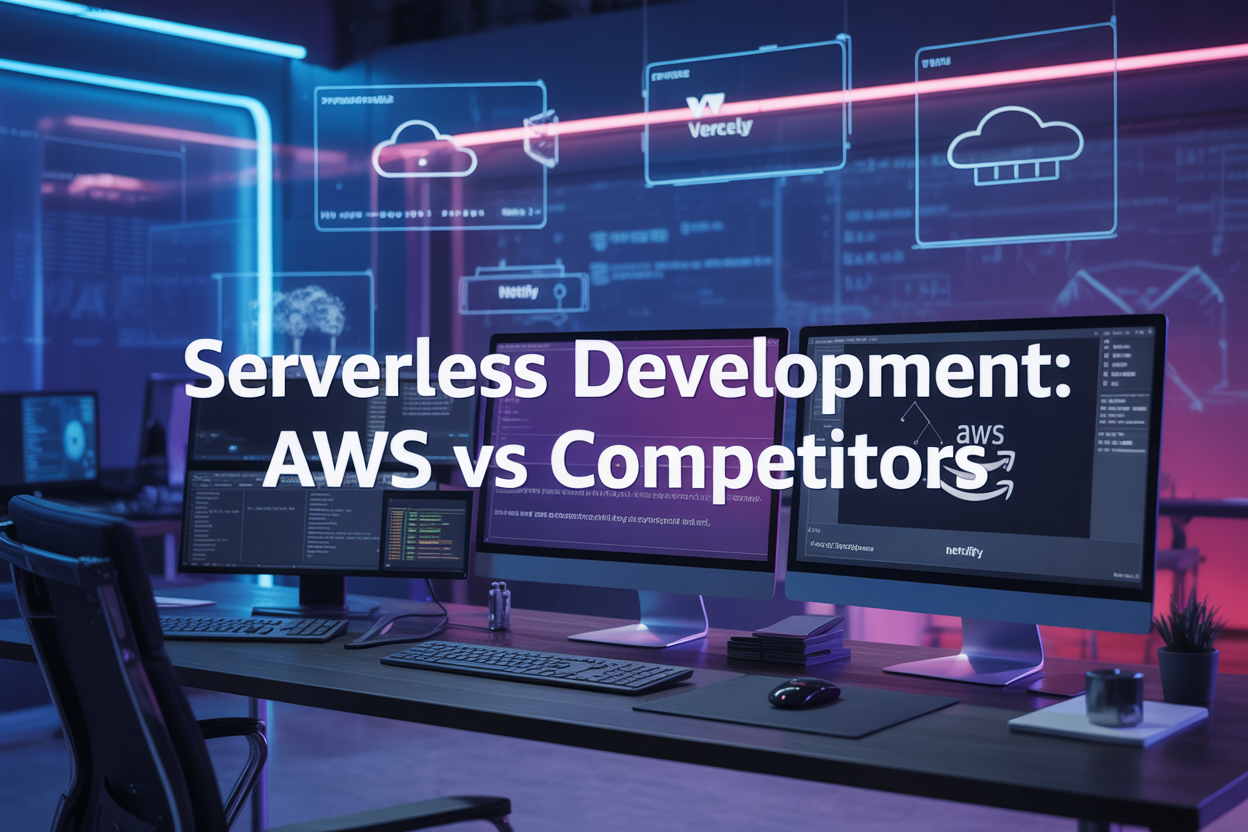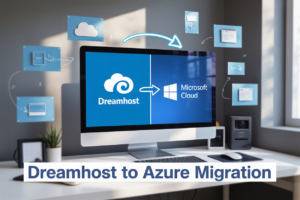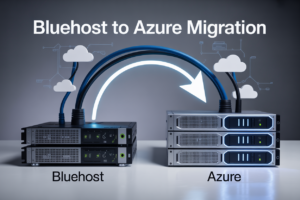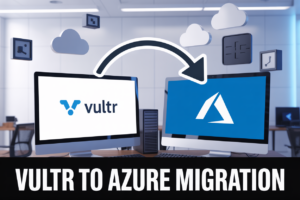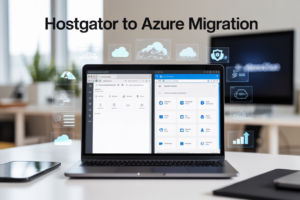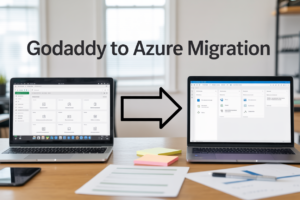Cloud engineers face a critical decision when building AWS applications: choosing between serverless computing with AWS Lambda and infrastructure as code approaches like AWS CDK. This comparison breaks down the key differences in AWS Lambda vs CDK approaches, helping you decide when each solution fits your serverless architecture patterns and cloud engineering serverless needs.
This guide is designed for cloud engineers, DevOps professionals, and solution architects who need to make informed decisions about serverless computing AWS implementations and infrastructure as code CDK strategies. Whether you’re managing existing workloads or designing new systems, you’ll get practical insights into both approaches.
We’ll explore AWS Lambda performance characteristics and scaling behavior, dive into CDK deployment automation capabilities and workflow optimization, and analyze AWS cost optimization strategies for both serverless and infrastructure-focused solutions. You’ll walk away with a clear infrastructure as code comparison framework and actionable guidance for Lambda function scaling decisions that match your specific use cases.
Understanding Serverless Computing and Infrastructure as Code Fundamentals
Core principles of serverless architecture and event-driven computing
Serverless computing flips traditional infrastructure management on its head by abstracting server provisioning entirely from developers. AWS Lambda functions execute code in response to specific triggers like HTTP requests, database changes, or file uploads, creating truly event-driven applications. This architecture automatically scales from zero to thousands of concurrent executions without manual intervention, charging only for actual compute time used rather than idle server capacity.
Infrastructure as Code methodology and automated provisioning benefits
Infrastructure as Code transforms manual server configuration into version-controlled, repeatable code deployments. AWS CDK enables cloud engineers to define entire application stacks using familiar programming languages like TypeScript or Python, automatically generating CloudFormation templates behind the scenes. This approach eliminates configuration drift, enables consistent environments across development and production, and allows infrastructure changes to follow standard software development practices including code reviews, testing, and rollback capabilities.
Key differences between runtime execution and infrastructure management
AWS Lambda vs CDK represents fundamentally different cloud engineering concerns – Lambda handles code execution while CDK manages the underlying infrastructure supporting those executions. Lambda functions focus purely on business logic, receiving events and returning responses without knowledge of the servers running them. CDK deployment automation provisions the broader ecosystem including API gateways, databases, networking, and monitoring resources that Lambda functions depend on, creating a complete serverless architecture pattern that separates runtime concerns from infrastructure orchestration.
AWS Lambda Deep Dive for Cloud Engineers
Function-as-a-Service capabilities and execution environment
AWS Lambda transforms how cloud engineers approach application development by eliminating server management entirely. Each function runs in isolated containers with dedicated memory allocation ranging from 128MB to 10GB, automatically scaling from zero to thousands of concurrent executions. The runtime environment supports multiple programming languages including Python, Node.js, Java, Go, and .NET, with custom runtimes available through Lambda Layers. Functions execute within AWS’s secure sandbox environment, providing built-in logging through CloudWatch and automatic dead letter queue handling for failed invocations.
Performance optimization techniques and cold start mitigation
Cold starts remain the primary performance challenge for serverless computing AWS implementations, occurring when Lambda creates new execution environments. Cloud engineers can reduce cold start latency by keeping deployment packages under 50MB, choosing faster runtime languages like Go or Node.js, and implementing provisioned concurrency for predictable workloads. Connection pooling, global variable initialization, and avoiding heavyweight libraries significantly improve function performance. Lambda’s execution context reuse allows subsequent invocations to skip initialization steps, creating warm execution paths that deliver sub-millisecond response times for optimized functions.
Cost structure analysis and usage-based pricing model
AWS Lambda’s pay-per-request pricing model charges for actual compute time measured in milliseconds, making it extremely cost-effective for variable workloads. Pricing includes request charges ($0.20 per million requests) plus duration costs based on allocated memory and execution time. Functions consuming 512MB memory executing for 100ms cost approximately $0.0000008 per invocation. This usage-based pricing eliminates idle server costs but can become expensive for consistently high-traffic applications. AWS cost optimization strategies include right-sizing memory allocation, minimizing execution duration, and comparing Lambda costs against EC2 alternatives for sustained workloads.
Integration patterns with AWS services and third-party systems
Lambda functions integrate seamlessly with over 200 AWS services through event-driven triggers and direct SDK calls. Common integration patterns include S3 event processing, DynamoDB stream processing, API Gateway REST endpoints, and EventBridge rule targets. Asynchronous processing patterns leverage SQS queues and SNS topics for reliable message handling, while synchronous patterns support real-time API responses. Third-party integrations require VPC configuration for database connections or external API calls, though this introduces cold start penalties. Lambda’s built-in retry logic and error handling mechanisms ensure robust integration reliability across complex serverless architecture patterns.
AWS CDK Comprehensive Overview
Programming language support and developer experience advantages
AWS CDK transforms infrastructure as code CDK development by supporting TypeScript, Python, Java, C#, and Go, letting developers work in familiar languages instead of wrestling with YAML or JSON. The framework provides intelligent code completion, type safety, and real-time error detection that catches configuration mistakes before deployment. Cloud engineering serverless teams appreciate CDK’s object-oriented approach, where infrastructure components become classes with methods and properties. Built-in testing frameworks enable unit testing for infrastructure code, while IDE integration offers debugging capabilities that traditional CloudFormation lacks. The developer experience feels natural for application developers transitioning to infrastructure management.
Resource synthesis and CloudFormation template generation
CDK’s synthesis engine automatically converts high-level constructs into optimized CloudFormation templates, handling complex resource dependencies and configurations behind the scenes. The framework generates hundreds of lines of CloudFormation from just a few lines of CDK code, managing intricate relationships between AWS services. During synthesis, CDK applies best practices for security, networking, and resource naming conventions without manual intervention. The generated templates include proper error handling, rollback mechanisms, and resource tagging strategies. This abstraction layer shields developers from CloudFormation’s complexity while maintaining full control over the underlying infrastructure deployment process.
Construct library ecosystem and reusable component benefits
The AWS Construct Library offers pre-built, battle-tested components for common architectural patterns, accelerating development cycles significantly. Higher-level constructs encapsulate AWS best practices, automatically configuring security groups, IAM roles, and networking settings for complex services. Third-party construct libraries extend functionality beyond AWS services, integrating with tools like Datadog, New Relic, and GitHub Actions. Teams build custom construct libraries to standardize organizational patterns, ensuring consistency across projects and reducing duplicate code. The ecosystem promotes code reusability, where infrastructure patterns become shareable packages that other teams can install and customize for their specific needs.
Stack management and deployment orchestration capabilities
CDK stacks provide logical groupings of related resources, enabling independent deployment and lifecycle management across different environments. Cross-stack references automatically handle dependencies, allowing resources in one stack to reference outputs from another seamlessly. The framework supports stack-level permissions, letting teams control access to specific infrastructure components based on organizational boundaries. Environment-specific configurations through context variables enable single codebase deployment across development, staging, and production environments. Stack synthesis creates deployment artifacts that integrate with CI/CD pipelines, supporting blue-green deployments and canary releases for infrastructure changes.
Version control integration and collaborative development workflows
CDK projects integrate naturally with Git workflows, treating infrastructure code as first-class application code with proper branching strategies. Pull request reviews for infrastructure changes become possible through readable code diffs instead of cryptic CloudFormation template comparisons. The framework generates consistent, deterministic outputs that work well with version control systems, avoiding merge conflicts common with generated files. Collaborative development workflows support multiple developers working on the same infrastructure codebase simultaneously. CDK’s integration with GitHub Actions, GitLab CI, and Jenkins enables automated testing, security scanning, and deployment pipelines that treat infrastructure deployment automation with the same rigor as application deployments.
Performance and Scalability Comparison
Execution Speed and Latency Considerations for Lambda Functions
AWS Lambda performance hinges on cold start latency, which varies from 100ms to several seconds depending on runtime and memory allocation. Provisioned concurrency eliminates cold starts but increases costs. Lambda functions execute faster with optimized code, appropriate memory settings, and connection pooling for database operations.
Infrastructure Deployment Time and Stack Update Efficiency
CDK deployment speed depends on stack complexity and resource dependencies. Simple Lambda deployments complete within minutes, while complex infrastructure stacks may take 30+ minutes. CDK’s incremental updates only modify changed resources, reducing deployment times significantly compared to full stack recreations.
Auto-scaling Capabilities and Traffic Handling Mechanisms
Lambda automatically scales to handle thousands of concurrent executions with a default limit of 1,000 concurrent functions per region. Reserved concurrency prevents function throttling during traffic spikes. CDK-managed infrastructure scales based on configured policies, supporting predictable scaling patterns through CloudWatch metrics and custom triggers for optimal resource allocation.
Cost Analysis and Budget Optimization
Lambda pricing model and cost per execution breakdown
AWS Lambda charges based on request count and duration, making serverless computing AWS pricing predictable for variable workloads. You pay $0.20 per million requests plus compute time calculated in GB-seconds, starting at $0.0000166667 for every GB-second. Memory allocation directly impacts costs – a 128MB function costs significantly less than a 3GB configuration. Cold starts don’t incur additional charges, but they do consume billable duration. The first 1 million requests and 400,000 GB-seconds are free monthly, making Lambda cost-effective for small applications and testing environments.
CDK infrastructure costs and resource provisioning expenses
CDK deployment automation itself doesn’t add direct costs, but the infrastructure it provisions does. CloudFormation stacks created by CDK follow standard AWS pricing for each resource – EC2 instances, RDS databases, load balancers, and storage all bill independently. Infrastructure as code CDK deployments often include supporting resources like VPCs, security groups, and monitoring tools that add to total expenses. Unlike serverless models, these resources typically run continuously, generating consistent monthly charges regardless of actual usage patterns. Resource tagging through CDK helps track costs across different environments and applications.
Total cost of ownership comparison for different workload scenarios
Event-driven applications favor Lambda’s pay-per-use model, especially for unpredictable traffic patterns where serverless architecture patterns excel. High-frequency, consistent workloads often find traditional infrastructure more economical due to Lambda’s per-invocation pricing. A web API handling 10 million requests monthly might cost $200 with Lambda but only $50-100 with a properly sized EC2 instance managed through CDK. However, Lambda eliminates server management overhead, reducing operational costs. Development velocity also factors in – CDK requires more infrastructure knowledge while Lambda enables faster feature deployment. Consider data transfer costs, as Lambda functions in different regions can generate unexpected network charges.
Cost monitoring and optimization strategies
CloudWatch metrics track Lambda invocation costs, duration patterns, and memory utilization to identify optimization opportunities. Right-sizing memory allocation balances performance and cost – over-provisioned functions waste money while under-provisioned ones timeout expensively. AWS cost optimization tools like Cost Explorer and Budgets provide spending alerts and trend analysis. Reserved capacity for predictable Lambda workloads offers up to 17% savings. For CDK-managed infrastructure, use AWS Trusted Advisor recommendations and implement auto-scaling policies. Regular cost reviews help identify unused resources, oversized instances, and opportunities to migrate between serverless and traditional architectures based on actual usage patterns.
Use Case Selection and Architecture Decision Framework
Event-driven applications and real-time processing scenarios
Event-driven applications thrive with AWS Lambda’s automatic scaling and pay-per-execution model. Real-time data processing, API gateways, and microservices benefit from Lambda’s millisecond response times and seamless integration with AWS services like DynamoDB, S3, and EventBridge. Lambda excels when handling unpredictable traffic patterns, webhook processing, and IoT data streams where traditional infrastructure would be over-provisioned or under-utilized.
Infrastructure automation and multi-environment deployment needs
AWS CDK dominates infrastructure automation scenarios requiring complex orchestration across development, staging, and production environments. Multi-service deployments, networking configurations, and database provisioning benefit from CDK’s declarative approach and version control capabilities. CDK provides better governance for enterprise environments with compliance requirements, cross-account deployments, and infrastructure standardization needs where Lambda functions alone cannot address the broader architectural requirements.
Hybrid approaches combining serverless and IaC benefits
Combining AWS Lambda with CDK creates powerful hybrid architectures that leverage both serverless computing and infrastructure as code benefits. CDK provisions the foundational infrastructure—VPCs, databases, queues—while Lambda handles business logic and event processing. This approach optimizes costs by using serverless for variable workloads and traditional infrastructure for persistent services, creating scalable solutions that balance operational simplicity with architectural flexibility and long-term maintainability.
Choosing between AWS Lambda and CDK really comes down to understanding what you’re trying to build and how you want to manage it. Lambda shines when you need quick, event-driven functions that scale automatically without you worrying about the underlying servers. CDK, on the other hand, gives you the power to define and manage your entire cloud infrastructure using familiar programming languages, making it perfect for complex, multi-service applications that need precise control and repeatability.
The smartest approach isn’t always picking one over the other – it’s knowing when to use each tool in your cloud engineering toolkit. Lambda works great for microservices, API backends, and data processing tasks where you want to focus purely on code. CDK becomes invaluable when you’re building comprehensive cloud solutions that need consistent deployments, proper resource management, and infrastructure that evolves with your application. Start by evaluating your project’s complexity, team expertise, and long-term maintenance needs, then choose the tool that best matches your specific requirements rather than following the latest trends.










